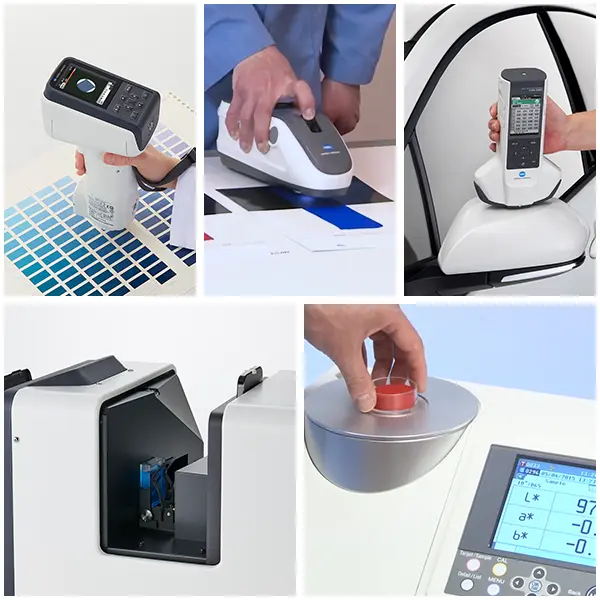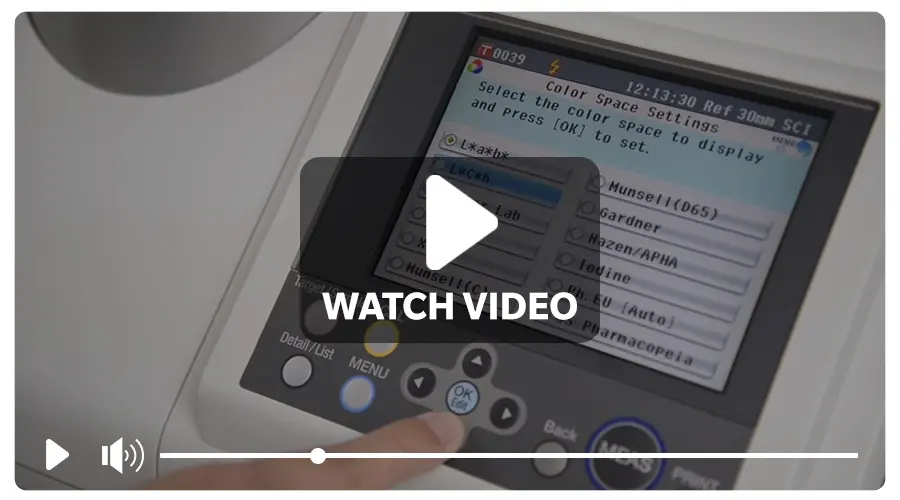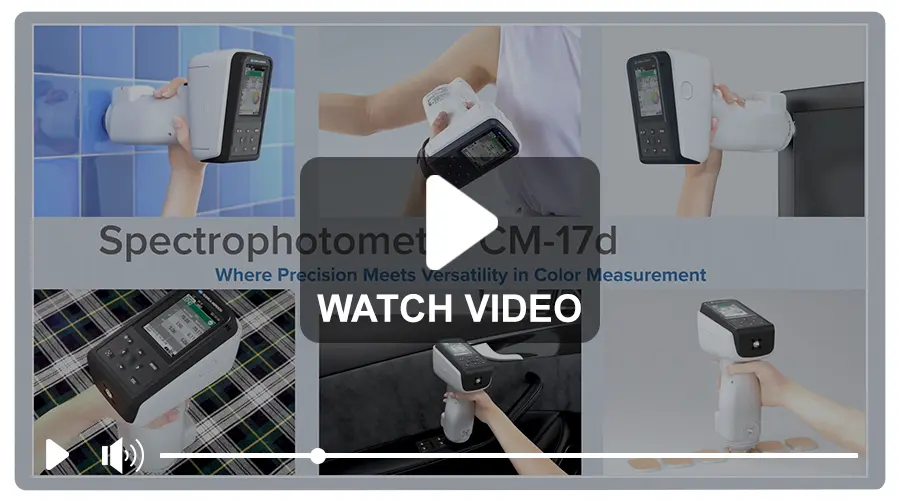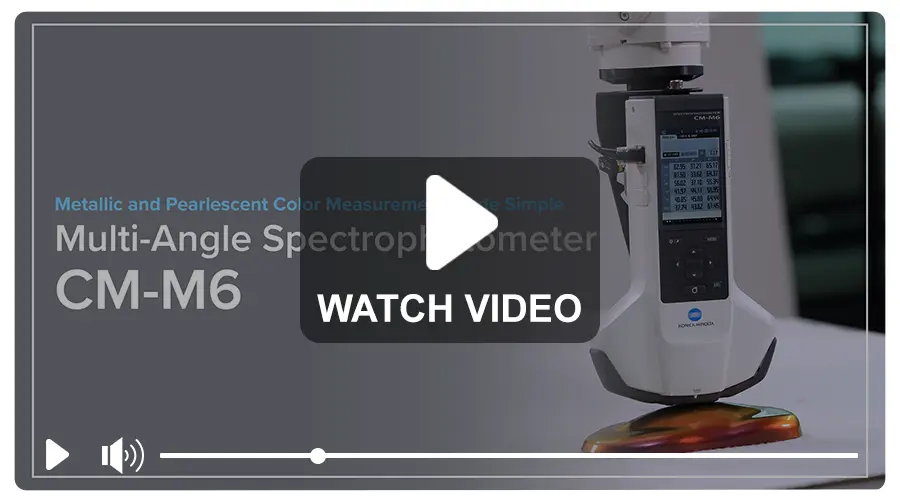Selecting the Best Spectrophotometer for Your Color Quality Control

In today’s competitive market, maintaining color consistency is vital for ensuring product quality and protecting brand reputation. Industries such as automotive, paint, plastics, food, cosmetics, textiles, and packaging rely on precise color standards to meet customer expectations and, in some cases, adhere to regulatory requirements. To achieve this, color measurement instruments like spectrophotometers have become essential, offering unmatched accuracy for quality control. However, with so many spectrophotometer options on the market, choosing the right one for your specific needs can be overwhelming. To simplify the process, here are key factors to consider that will help you navigate the selection process and make an informed decision.
Identify Your Application Needs
Choosing the right spectrophotometer starts with a clear understanding of your application and the materials you’ll be analyzing. Different industries and materials have distinct demands, and your chosen color measurement instrument must meet those specific requirements. For example, if you work with plastic parts or packaging, it’s essential to select a spectrophotometer capable of measuring opaque, translucent, or transparent samples. In industries like automotive, your focus may be on evaluating glossy, matte, or effect finishes such as metallic or pearlescent coatings. When dealing with pharmaceutical products like tablets or pills, a spectrophotometer that can measure the color of small surfaces with high precision would be ideal.
Deciding on the Spectrophotometers Configuration and Geometry
Spectrophotometers come in two main configurations: benchtop and portable. The right choice depends on your workflow and measurement needs, as each option offers unique benefits. Benchtop spectrophotometers are ideal for laboratory environments where precision and advanced features are critical. Benchtop models typically provide better accuracy and more sophisticated data analysis capabilities. They are perfect for industries that require detailed color analysis and quality control in a controlled setting. On the other hand, portable spectrophotometers are designed for on-the-go measurements and are ideal for fieldwork or on-site quality control. They are also well-suited for measuring large or irregularly shaped samples that can be challenging to transport to a lab. While both models measure color reflectance, the benchtop spectrophotometer offers transmittance measurements for transparent or translucent materials like liquids, films, clear solids, etc.
Measurement geometry defines how light interacts with a material and the detector and is critical for achieving accurate and reliable results. The three most commonly used geometries are 45°/0°, d/8°, and multi-angle, each suited to different materials and applications. The 45°/0° geometry illuminates a sample at a 45° angle and detects the reflected light at 0°. This setup closely aligns with how the human eye perceives appearance, making it ideal for evaluating the visual properties of the material, particularly in relation to surface conditions. For example, glossy surfaces often appear darker than matte ones, even if both are dyed the same color. When assembling products made from materials with varying surface textures, the 45°/0° geometry ensures consistency in their overall appearance.
The d/8° geometry provides uniform illumination from all directions and detects reflected light at an 8° angle. This geometry can measure materials in either Specular Component Excluded (SCE) or Specular Component Included (SCI) modes. It is well-suited for capturing a sample’s “true” color while accounting for its appearance, making it ideal for color formulation or ensuring consistent color in samples with diverse textures. The multi-angle geometry illuminates the sample at a 45° angle but detects reflected light at multiple angles, such as -15°, 15°, 25°, 45°, 75°, and 110°. This geometry is particularly effective for evaluating metallic or pearlescent colors, as it captures color variations across different angles, accurately representing the unique visual properties of these colors.
Spectrophotometer Accuracy and Repeatability
Accuracy and repeatability are essential in maintaining reliable color quality control. A spectrophotometer with good inter-instrument agreement (IIA) ensures consistent measurements across multiple units of the same model, regardless of location. This feature is especially crucial for businesses with various production facilities or those working with global supply chains, as it ensures minimal variation between spectrophotometers. By minimizing discrepancies between the spectrophotometers, seamless digital color communication can be achieved to ensure uniform color standards throughout the supply chain.
Equally important is the spectrophotometer’s repeatability. High repeatability ensures that a single spectrophotometer delivers consistent results when measuring the same sample multiple times, ensuring batch-to-batch consistency. For industries that require precise color matching, a spectrophotometer with excellent IIA and repeatability is essential as it delivers accurate and reliable color measurement, reduced errors, and seamless production workflows.
Consider Advanced Features for Enhanced Usability
When selecting a spectrophotometer, consider advanced features that can improve usability and efficiency. UV calibration capabilities are invaluable for industries like paper and textiles, where materials may contain fluorescent properties. Additionally, some spectrophotometers are equipped with industry-specific indices such as APHA/Hazen/Pt-Co, Gardner color, or European Pharmacopoeia standards, commonly used in sectors like pharmaceuticals and chemicals. These pre-installed indices simplify the color measurement process by automatically converting results, saving time and effort.
Another beneficial feature is integrated gloss measurement, which evaluates a sample’s gloss level alongside color. This eliminates the need for separate measurements or multiple instruments and helps streamline workflows, particularly when handling high volumes of samples. Some models also provide data connectivity, enabling wireless data transfer and integration with automated production systems.
Konica Minolta Color Measurement Solutions
Konica Minolta Sensing, a leader in color measurement technology, offers a diverse range of spectrophotometers designed to meet the needs of various industries and applications. From portable devices for on-the-go quality control to advanced benchtop models for in-depth color analysis, Konica Minolta Sensing products set the standard for precision and reliability.

From left to right: Spectrophotometer CM-3700A Plus, Spectrophotometer CM-5, Spectrophotometer CM-17d, Spectrophotometer CM-26dG, and Multi-Angle Spectrophotometer CM-M6
The benchtop spectrophotometer lineup includes the flagship Spectrophotometer CM-3700A Plus, renowned for its exceptional accuracy and robust functionality. Features such as UV adjustment, environmental temperature and humidity monitoring, sample thermometers, and more make it ideal for demanding color measurement and color matching applications. Another standout option is the Spectrophotometer CM-5, which comes pre-loaded with various industry-specific indices and color systems and is a versatile choice for sectors like plastics, food, chemicals, pharmaceuticals, and more.
WATCH VIDEO
For portable solutions, Konica Minolta offers spectrophotometers for ease of use and fast, accurate measurements. The Spectrophotometer CM-M6 is purpose-built for measuring metallic and pearlescent colors commonly used in the automotive industry. Meanwhile, the Spectrophotometer CM-26dG and CM-17d are popular options due to their outstanding IIA and repeatability performance. Furthermore, the CM-26dG incorporates integrated gloss measurement for streamlined workflows, while the CM-17d features a camera viewfinder for precise sample positioning.
WATCH VIDEO
To complement its hardware, Konica Minolta provides the color data software SpectraMagic NX2, an indispensable tool for users seeking advanced data analysis and reporting capabilities. This next-generation software features an intuitive interface and offers powerful features for managing, analyzing, and visualizing measurement data. It allows users to create customized templates for data presentation, ensuring results are displayed in formats that meet specific industry or organizational requirements. The SpectraMagic NX2 also features a QC template function, which enables standardized measurement conditions across multiple operators or sites, thereby maintaining consistency and reducing errors. Furthermore, it comes equipped with an instrument check function that monitors the performance and reliability of connected spectrophotometers, ensuring ongoing measurement accuracy and compliance with quality standards.
Need help finding the suitable spectrophotometers or measurement solutions to ensure the highest quality in your color measurement applications? Our experts are here to help—reach out to us now for a free consultation.




